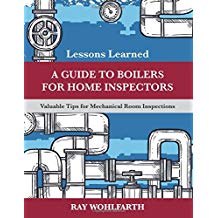Respiratory protection in the workplace
Establishing a compliant program can save lives.
Establishing a compliant program can save lives.
Safety professionals often struggle when developing a written worksite-specific respiratory protection program. OSHA-prepared guidance materials include the “Small Entity Compliance Guide,” which provides answers to frequently asked questions, general information and a sample program. It can be found on the OHSA website under the publications tab.
The first step in the process of developing a RPP is to conduct an industrial hygiene audit of the workplace to assess the presence of any atmospheric contaminants. Respiratory hazards can take the form of harmful dust, fogs, fumes, mists, gases, smoke, sprays or vapors. The IHA will identify and categorize contaminants that are present and will help the employer determine the steps necessary to protect employees from those hazards.
The preferred practice to protect employees from hazards is the use of engineering controls. However, if engineering controls are not feasible or already are being implemented, or in case of an emergency, §1910.134 mandates that the employer establish, implement and maintain a written worksite-specific RPP. The program must include a suitably trained program administrator and the provisions outlined in §1910.134(c).
If the employer’s program does not include particular elements listed in §1910.134(c)(1), they need not be included in the program. For example, if an employer does not use atmosphere-supplying respirators, it would not have to include the element-concerning procedures to ensure adequate air quality.
When developing a respiratory program, employers must identify and evaluate respiratory hazards in the workplace, identify relevant workplace and user factors and make a reasonable estimate of employee exposure to the identified contaminants. Based on these factors, National Institute for Occupational Safety and health-certified respirators are selected and provided for employee use. Respirators must be selected from a sufficient number of models, styles and sizes to correctly fit and be acceptable to the user.
Voluntary use of respirators is only permitted when the employer determines that the respirator itself will not create a hazard for the employee through misuse, medical conditions, or other hazards or conditions. The voluntary respirator use section of the program must only contain the parts pertaining to voluntary respirator use: medical evaluations, inspection, cleaning, storage and maintenance. A best practice would be to include a listing of employees included in the voluntary use of respirators in an appendix of the program.
Because using a respirator may place a physiological burden on an employee, the employer is required to provide medical evaluations administered by a professional licensed health-care provider to those employees who wear respirators. Medical evaluations must be performed prior to fit testing, respirator use, when an employee reports medical symptoms related to respirator use, when changes occur in workplace conditions, or when other circumstances indicate a re-evaluation is needed. Medical evaluations are confidential with a pass/fail from a PLHCP. A best practice would be to include a listing of employees included in medical evaluations in an appendix of the program.
Employers must provide procedures for the maintenance, cleaning and disinfection, storage and inspection of respirators used by employees. All respirators are to be stored in such a manner that protects them from damage, contamination, dust, sunlight, extreme temperatures, excessive moisture, harmful chemicals and face-piece distortion and exhalation valve damage.
Respirators must be inspected before each use, with the exception of emergency respirators and self-contained breathing apparatuses, which are inspected monthly. Emergency respirators require certification documents to prove proper inspection.
Respiratory protection programs are complex to develop and maintain, but if executed properly, their benefits are immeasurable.
Safety professionals often struggle when developing a written worksite-specific respiratory protection program. OSHA-prepared guidance materials include the “Small Entity Compliance Guide,” which provides answers to frequently asked questions, general information and a sample program. It can be found on the OHSA website under the publications tab.
The first step in the process of developing a RPP is to conduct an industrial hygiene audit of the workplace to assess the presence of any atmospheric contaminants. Respiratory hazards can take the form of harmful dust, fogs, fumes, mists, gases, smoke, sprays or vapors. The IHA will identify and categorize contaminants that are present and will help the employer determine the steps necessary to protect employees from those hazards.
The preferred practice to protect employees from hazards is the use of engineering controls. However, if engineering controls are not feasible or already are being implemented, or in case of an emergency, §1910.134 mandates that the employer establish, implement and maintain a written worksite-specific RPP. The program must include a suitably trained program administrator and the provisions outlined in §1910.134(c).
If the employer’s program does not include particular elements listed in §1910.134(c)(1), they need not be included in the program. For example, if an employer does not use atmosphere-supplying respirators, it would not have to include the element-concerning procedures to ensure adequate air quality.
When developing a respiratory program, employers must identify and evaluate respiratory hazards in the workplace, identify relevant workplace and user factors and make a reasonable estimate of employee exposure to the identified contaminants. Based on these factors, National Institute for Occupational Safety and health-certified respirators are selected and provided for employee use. Respirators must be selected from a sufficient number of models, styles and sizes to correctly fit and be acceptable to the user.
Voluntary use of respirators is only permitted when the employer determines that the respirator itself will not create a hazard for the employee through misuse, medical conditions, or other hazards or conditions. The voluntary respirator use section of the program must only contain the parts pertaining to voluntary respirator use: medical evaluations, inspection, cleaning, storage and maintenance. A best practice would be to include a listing of employees included in the voluntary use of respirators in an appendix of the program.
Because using a respirator may place a physiological burden on an employee, the employer is required to provide medical evaluations administered by a professional licensed health-care provider to those employees who wear respirators. Medical evaluations must be performed prior to fit testing, respirator use, when an employee reports medical symptoms related to respirator use, when changes occur in workplace conditions, or when other circumstances indicate a re-evaluation is needed. Medical evaluations are confidential with a pass/fail from a PLHCP. A best practice would be to include a listing of employees included in medical evaluations in an appendix of the program.
Employers must provide procedures for the maintenance, cleaning and disinfection, storage and inspection of respirators used by employees. All respirators are to be stored in such a manner that protects them from damage, contamination, dust, sunlight, extreme temperatures, excessive moisture, harmful chemicals and face-piece distortion and exhalation valve damage.
Respirators must be inspected before each use, with the exception of emergency respirators and self-contained breathing apparatuses, which are inspected monthly. Emergency respirators require certification documents to prove proper inspection.
Respiratory protection programs are complex to develop and maintain, but if executed properly, their benefits are immeasurable.
Links
Looking for a reprint of this article?
From high-res PDFs to custom plaques, order your copy today!







